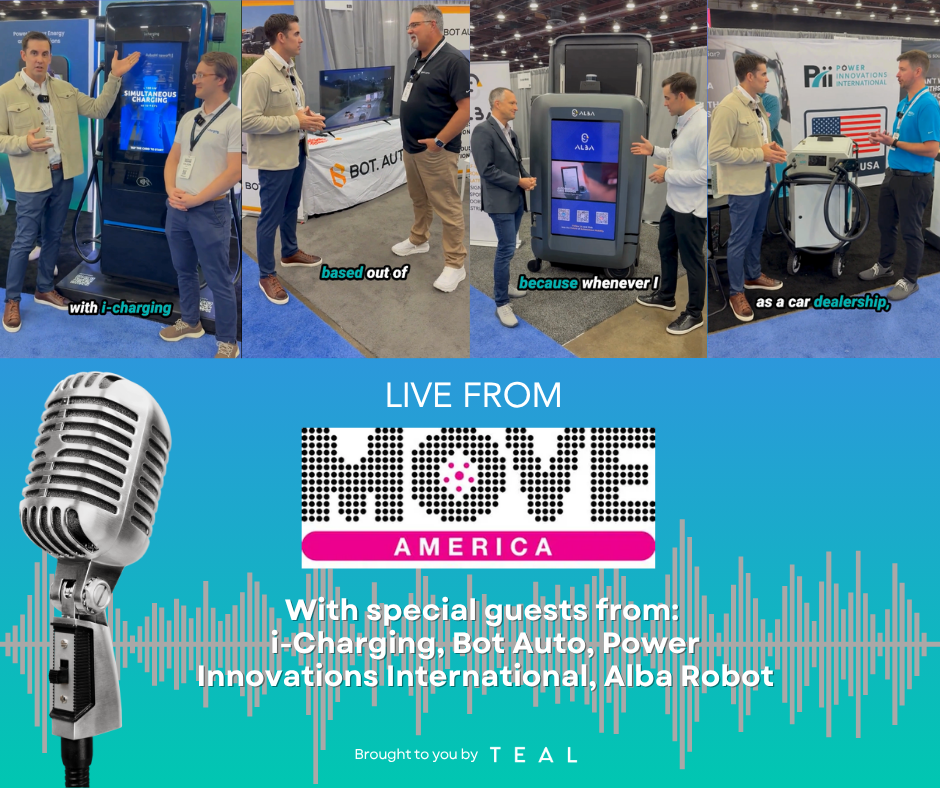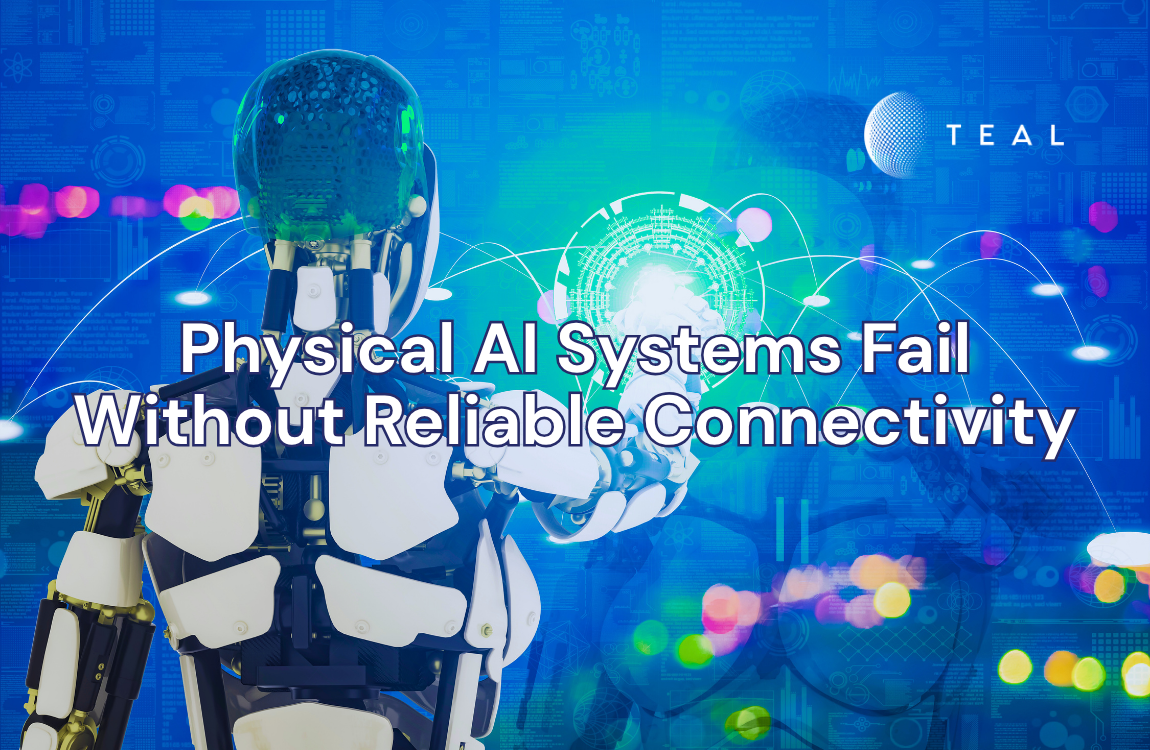Improving Surveillance Efficiency with Advanced Autonomous Systems
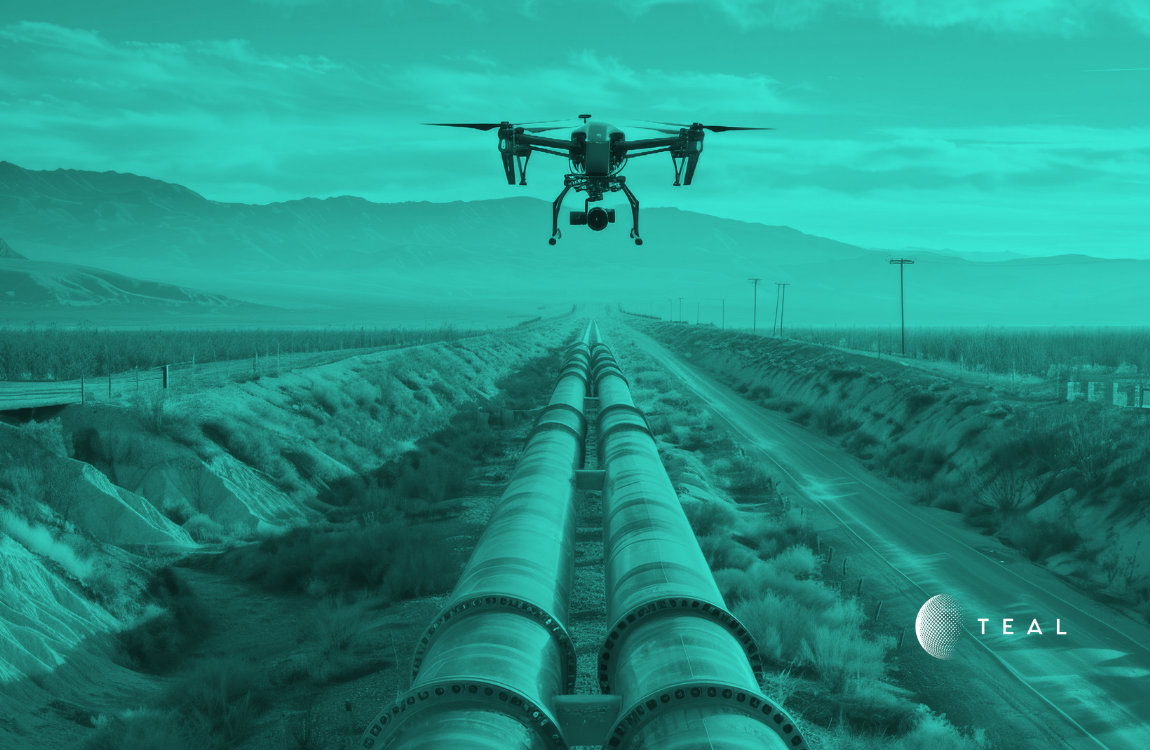
Surveillance used to mean security guards walking perimeters, inspectors climbing towers, and emergency responders arriving at scenes with limited information. But autonomous drones and robots are changing the game. These systems patrol facilities 24/7, inspect critical infrastructure without putting workers at risk, and respond to incidents faster than human teams ever could.
The shift isn’t just about replacing manual labor. It’s about moving from reactive monitoring to predictive intervention. By combining autonomy, AI-powered analytics, and real-time data fusion, these technologies identify threats and anomalies before they escalate into costly failures or dangerous situations.
Whether you’re protecting a facility, managing infrastructure, coordinating emergency response, or monitoring environmental risks, autonomous surveillance offers a smarter, safer, and more cost-effective approach. Let’s explore how this technology is reshaping key industries and what it means for your operations.
From Reactive to Predictive: The Core Transformation
Autonomous aerial and ground systems don’t just watch. They analyze, predict, and act. Here’s what makes them fundamentally different from traditional surveillance:
Autonomy: Pre-programmed patrols run continuously without human pilots or drivers. Drone-in-a-box systems can launch automatically when triggered by alarms or scheduled routines.
Data fusion: Visual cameras, thermal imaging, LiDAR, acoustic sensors, and even chemical detectors work together to build a complete picture of what’s happening on the ground.
AI analytics: Real-time object detection spots intruders, anomaly detection flags equipment issues, and threat prediction models help you stay ahead of problems.
Networked operations: Integration with command centers and IoT ecosystems means live decision support. Operators receive actionable intelligence, not just raw footage.
Safety and reach: These systems access dangerous zones, remote locations, and vast areas that human teams can’t easily cover.
The result? Organizations catch problems early, respond faster, and operate more safely.
Security and Rapid Response: Always-On Protection
Facilities, borders, and high-risk sites require constant vigilance. Autonomous systems deliver exactly that.
Ground robots like those from Knightscope, DOGU, and RAD Security patrol perimeters around the clock, while combined drone and robotics platforms from Asylon Robotics provide ground and aerial oversight. When an alarm triggers, these systems launch automatically and stream live video to security teams.
AI-based threat recognition identifies unusual movements, intrusions, or hazardous conditions by combining thermal and optical imaging. Multiple drones can coordinate as swarms, covering larger areas while maintaining continuous coverage.
The impact is measurable:
- 60–80% reduction in manual patrol costs
- Response times under 2 minutes for drone-in-a-box systems
- Enhanced safety by keeping human guards out of high-risk zones
One security manager at a manufacturing facility told us: “We used to have guards walking the perimeter every two hours. Now our autonomous system runs continuously, and we only send people when there’s a real threat.”
Critical Infrastructure: Predictive Maintenance at Scale
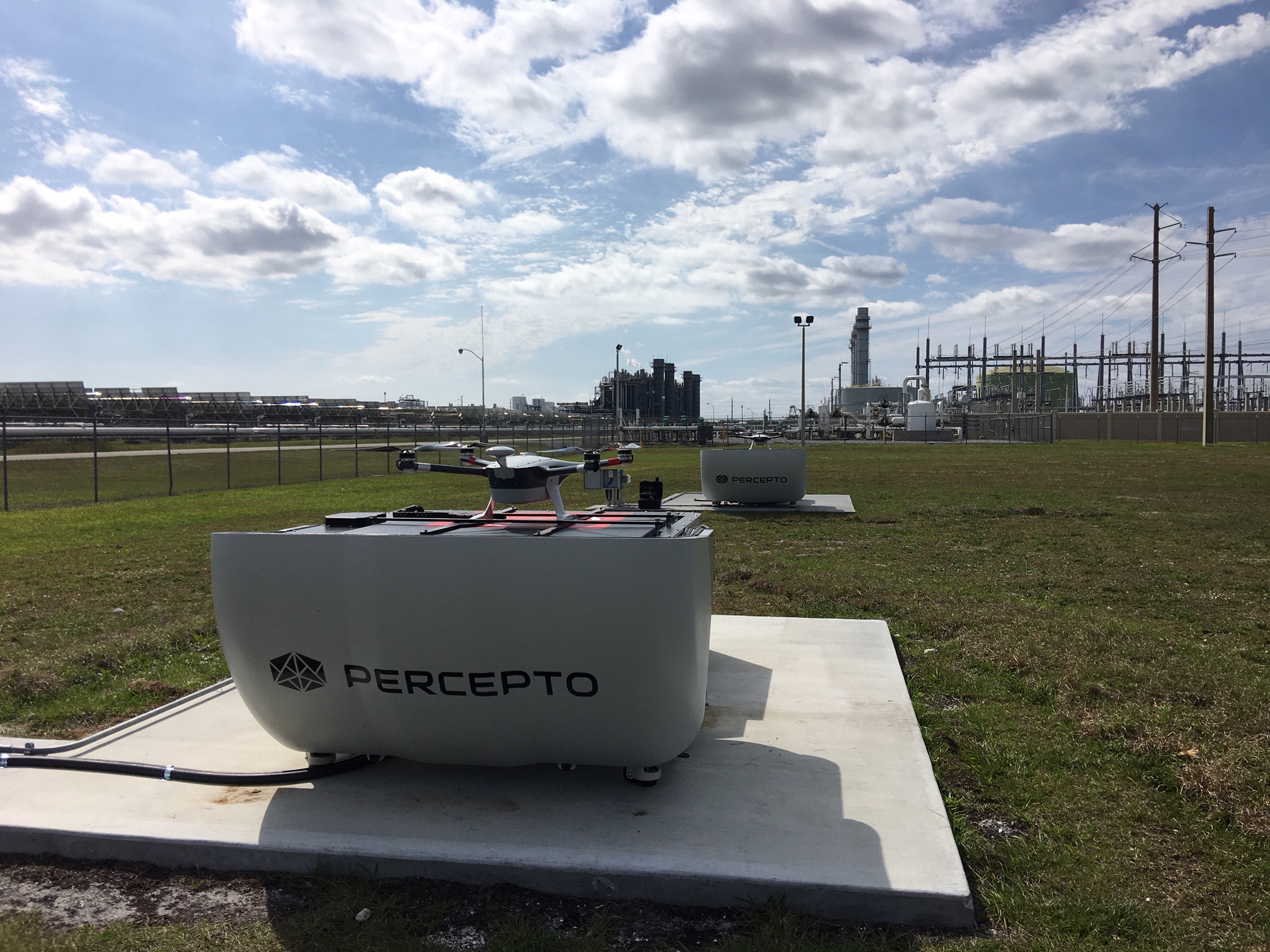
Energy grids, refineries, ports, railways, pipelines, and water utilities face a common challenge: how to inspect vast, complex systems without constant shutdowns or putting workers in danger.
Autonomous drones solve this by providing predictive maintenance. AI analyzes imagery for corrosion, leaks, structural damage, or intrusions before equipment fails. Platforms like Percepto, Airobotics, Mitsubishi Power-I Autonomous Inspection, MFE Inspection Solutions, and Azur Drones patrol powerlines, oil facilities automatically, and provide detailed infrastructure assessments.
Continuous drone mapping builds live 3D models—digital twins—that track infrastructure health over time. Edge computing processes video data onboard, transmitting only anomalies to reduce bandwidth and focus attention where it matters.
The benefits are clear:
- Reduced downtime and inspection costs
- Improved worker safety (fewer tower climbs or confined-space entries)
- Regulatory compliance backed by real-time visual evidence
A utility operator explained: “We used to schedule inspections quarterly. Now we have a continuous view of our assets and can address issues before they become outages.”
Public Safety and Emergency Response: Faster, Safer Operations
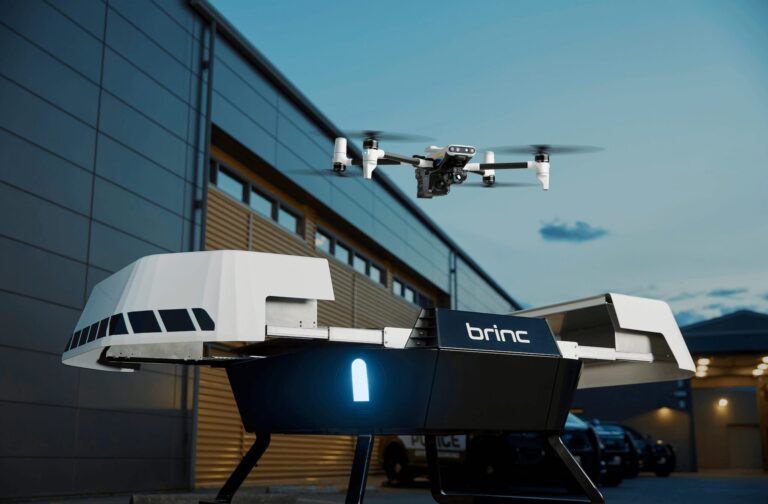
When seconds count, autonomous systems give first responders the advantage they need.
Police departments, fire services, and search-and-rescue teams use drones and base station technology from companies like Skydio, BRINC, Nokia, and Hextronics to gain tactical situational awareness during incidents. Some systems can respond to emergency calls before responders arrive, streaming first-on-scene footage to command centers.
Thermal imaging locates missing persons in search-and-rescue operations or identifies hotspots during fires. Post-disaster mapping provides damage assessment data that guides reconstruction efforts.
The operational impact:
- 3× faster location times in search-and-rescue operations
- Lower risk for responders in hazardous environments
- Data-driven coordination across multiple agencies
A fire chief shared: “Having eyes on the scene before we arrive changes everything. We know what we’re walking into and can deploy resources more effectively.”
Agriculture and Forestry: Precision at Every Level
Farmers and land managers face constant pressure to do more with less—less water, fewer chemicals, lower costs. Autonomous systems make precision agriculture practical at scale.
Drones equipped with multispectral sensors from companies like Volatus Aerospace and AgEagle Aerial Systems analyze crop health, nutrient stress, and irrigation needs. Ground robots perform targeted spraying and soil sampling. AI crop analytics detect disease spread and yield variation early, when intervention is still effective.
Integration with farm management systems enables variable-rate application: applying exactly the right amount of inputs exactly where they’re needed.
The results speak for themselves:
- 20–30% reduction in water, fertilizer, and pesticide use
- Early disease and pest detection minimizes yield loss
- Improved sustainability with reduced environmental impact
One vineyard operator noted: “We used to treat entire blocks the same way. Now we address each section based on what the drone data shows. Our yields are up, and our input costs are down.”
Wildfire Detection and Environmental Monitoring: Early Warning Systems
Wildfires spread fast. Detection delays measured in minutes can mean the difference between containment and catastrophe.
Autonomous drone networks patrol fire-prone regions continuously, using thermal sensors to flag heat signatures before flames spread. Swarm mapping creates real-time fire perimeters that guide containment planning. Smoke and gas sensing detects hazardous emissions early, enabling faster evacuation alerts.
SenseNet Canada has built a sophisticated sensor network powered by AI algorithms, data analytics, and visualization dashboards specifically for early wildfire detection.
The impact on fire management:
- Detection in minutes instead of hours
- Enhanced firefighter safety through better situational awareness
- Reduced area burned, lowering carbon emissions and ecological damage
An environmental monitoring coordinator explained: “Traditional detection methods rely on spotters or satellites with limited resolution. Autonomous drones give us continuous, high-resolution coverage exactly where we need it.”
The Connectivity Challenge: When Networks Fail, Missions Stop
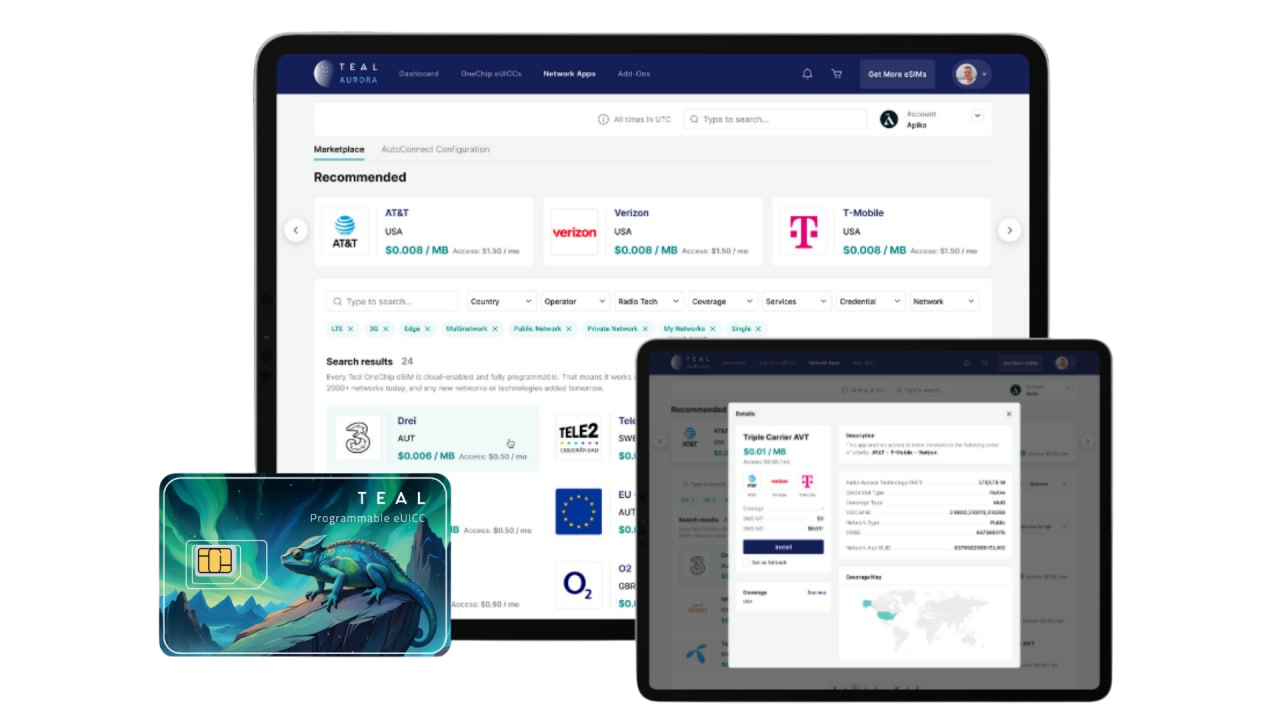
All of this technology depends on one critical foundation: reliable connectivity. Without guaranteed network performance, autonomous surveillance systems lose their value. Image feeds drop, telemetry data disappears, control commands get delayed, and “always-on” systems go offline.
For beyond visual line of sight (BVLOS) missions, large-area infrastructure monitoring, or remote forest surveillance, connectivity outages become mission-critical failures. As one industry analyst put it: “Connectivity can be one of these big hurdles to completing the mission.”
Traditional cellular solutions create single points of failure. If your carrier’s network degrades or goes down, your operations stop. Device lock-in means you can’t easily switch providers. Limited coverage leaves gaps in remote areas. Managing multiple vendors and contracts adds complexity and cost.
TEAL’s Network Orchestration Service (NOS) solves these problems by providing flexible, redundant, and controllable global connectivity. Organizations gain the ability to dynamically switch between carrier networks across 196 countries, eliminating vendor lock-in and ensuring coverage even when one network degrades.
Here’s how NOS addresses the critical connectivity challenges:
- Network outages: Automatic failover to backup carriers in seconds keeps your systems online.
- Single points of failure: Built-in redundancy across multiple networks means no more mission-ending outages.
- Vendor lock-in: Switch carriers without delays, physical SIM swaps, or managing multiple contracts.
- Limited coverage: Native access to networks in 196 countries via one unified platform.
- Cost control: Pay only for the data you use, with no minimum obligations. Need unlimited 5G? That’s available too. eSIM management is free if you bring your own SIM and carrier agreement.
The TEAL platform uses patented and wholly owned eSIM/SGP.32 technology for over-the-air provisioning and centralized orchestration of network policies. Real-time monitoring through a centralized dashboard enables proactive issue detection and response. Bring Your Own Carrier (BYOC) and Bring Your Own SIM (BYOS) flexibility means you’re never locked into a single provider.
For autonomous surveillance applications where continuous video streams, command links, and location data are essential, NOS provides the backbone that turns connectivity from a risk into a managed asset. The combination of flexible global reach, automatic failover, and device-level network control makes it possible to deploy autonomous systems that simply cannot afford to go offline.
What This Means for Your Operations
Autonomous surveillance isn’t futuristic speculation. It’s operational reality delivering measurable results across security, infrastructure, public safety, agriculture, and environmental management.
The technology has matured. The business case is proven. The question isn’t whether autonomous systems will transform how you monitor and respond—it’s whether you’ll lead the transition or follow it.
If you’re ready to explore how autonomous surveillance can improve your operations, start by identifying your biggest monitoring challenges. Where do manual processes create bottlenecks? Where do coverage gaps create risk? Where could faster detection prevent costly failures?
The answers will point you toward the right autonomous solutions and the reliable connectivity infrastructure that makes them work.
Set up a free consultation today to explore a better way to connect your autonomous solutions.
Book a Meeting Now!
Recent Posts
Improving Surveillance Efficiency with Advanced Autonomous Systems
Teal Communications Staff2025-10-23T18:12:12+00:00
Innovations in Motion: Exclusive Interviews from MOVE America in Detroit
Teal Communications Staff2025-10-16T17:07:05+00:00
Why Physical AI Systems Fail Without Reliable Connectivity
Teal Communications Staff2025-10-07T23:19:27+00:00


